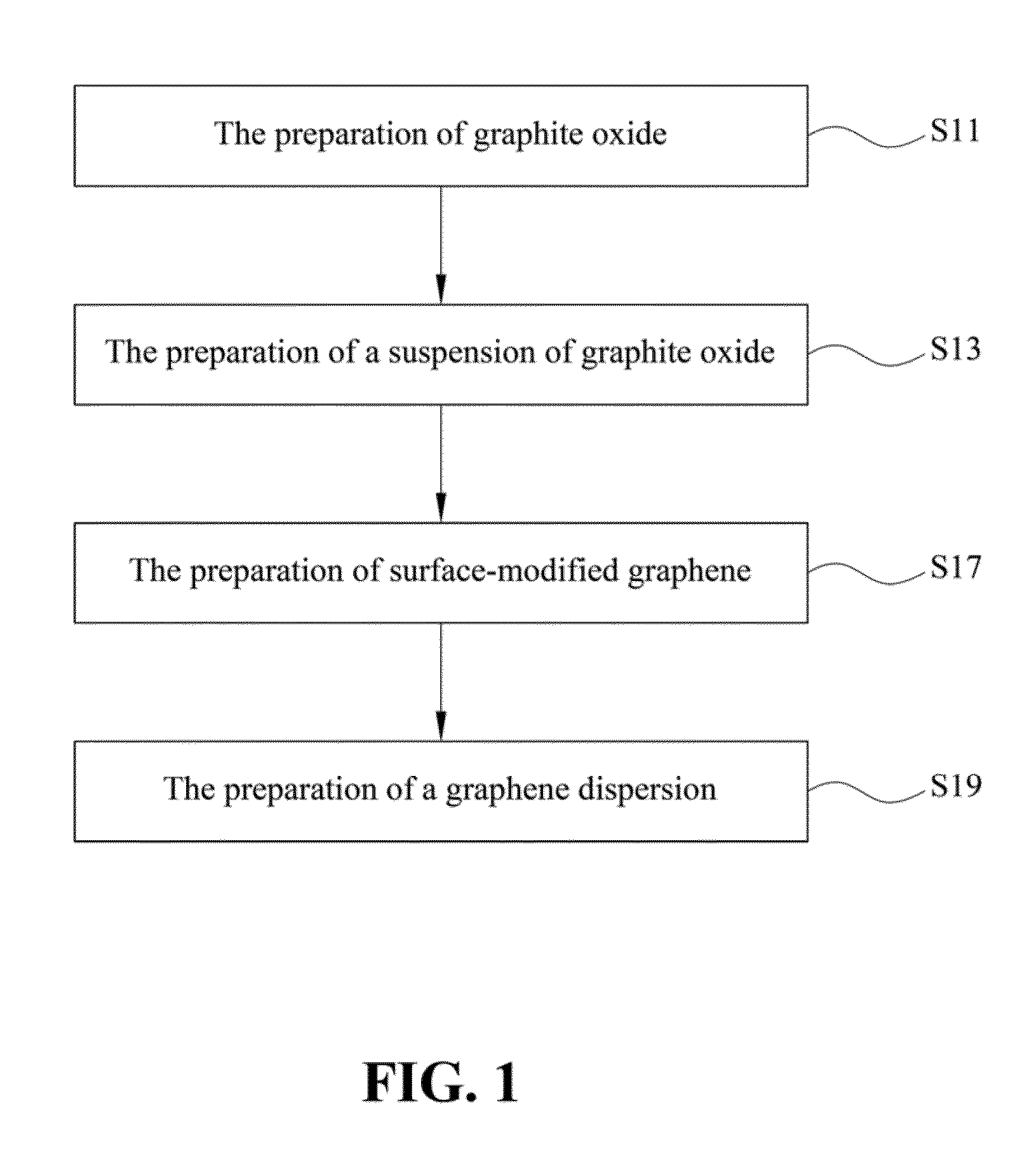Method for the preparation of graphene
a graphene and graphene technology, applied in the preparation of sulfonic acid esters, organic chemistry, chemistry apparatus and processes, etc., can solve the problems of insufficient reductibility, long time, and difficult coating of graphene dispersion compared with carbon nanotube dispersion, so as to achieve better performance, wide application, and further reduce the effect of graphene powder obtained by other methods
- Summary
- Abstract
- Description
- Claims
- Application Information
AI Technical Summary
Benefits of technology
Problems solved by technology
Method used
Image
Examples
example 1
[0035]0.5 g of sodium dodecylbenzene sulphonate (SDBS) as dispersing agent is added to 300 mL of graphite oxide suspension until all the solids have been dissolved, followed by ultrasonic treatment for 10 minutes. Then, 1 g of ascorbic acid as acidic reducing agent is added to the resultant solution, and then the mixture is continuously stirred for 24 hours to form a black well-dispersed graphene dispersion (as shown in FIG. 3), and its pH is about 4 and its TEM image is presented in FIG. 4.
example 2
[0036]1 g of ascorbic acid as acidic reducing agent is directly added to 300 mL of graphite oxide suspension followed by stirring for 24 hours to form a black graphene dispersion containing agglomerates of graphene powder particles (as shown in FIG. 5).
example 3
[0037]The graphene dispersion of EXAMPLE 1 is filtered, and dried in oven at a temperature of 90° C. to thus obtain graphene powder with oxygen content of 4.8 wt % (measured by nitrogen and oxygen analyzer) which is much lower than the oxygen content of graphite oxide.
PUM
| Property | Measurement | Unit |
|---|---|---|
| thickness | aaaaa | aaaaa |
| pH | aaaaa | aaaaa |
| pH | aaaaa | aaaaa |
Abstract
Description
Claims
Application Information
 Login to View More
Login to View More - R&D
- Intellectual Property
- Life Sciences
- Materials
- Tech Scout
- Unparalleled Data Quality
- Higher Quality Content
- 60% Fewer Hallucinations
Browse by: Latest US Patents, China's latest patents, Technical Efficacy Thesaurus, Application Domain, Technology Topic, Popular Technical Reports.
© 2025 PatSnap. All rights reserved.Legal|Privacy policy|Modern Slavery Act Transparency Statement|Sitemap|About US| Contact US: help@patsnap.com



